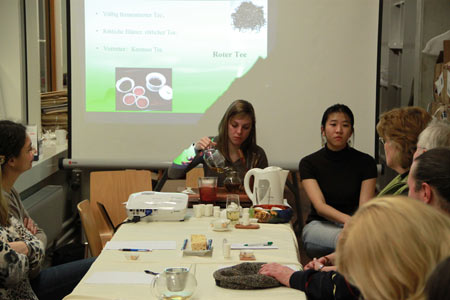| Home > China Feature |
Grass-roots Art Booms in China
Definition of Grass-roots:
1. ordinary people: the ordinary people in a community or the ordinary members of an organization, as opposed to the leadership
2. basis of something: the origin, basis, fundamental aim, or basic meaning of something
the grassroots of socialism
3. rural areas: agricultural or rural areas
4. rural people: the people living in rural areas
Washing Clothes by Luozhijian ( Grass-roots Art)
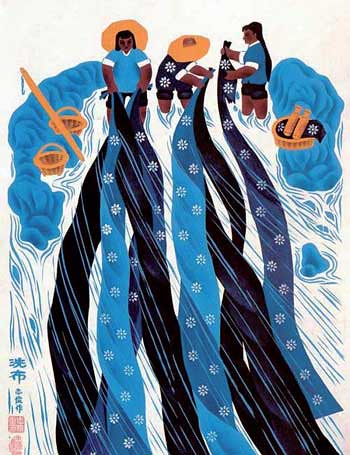
Chinese peasant painting, one form of grass-roots art, is gaining exposure at home and abroad as the ancient art finds new ways to adapt and capture China's changing countryside.
According to Liao Kaiming, an expert on peasant painting with National Art Museum of China, there are more than 100 "painting villages" scattered in different regions across China.
Liao says that peasant paintings first became popular in China during the 1950s, and with China's reform and opening, the art form quickly gained worldwide recognition in the 1990s.
The art form is known as peasant painting because artists typically hail from rural villages and generally have no formal artistic education. Peasant painting is characterized by an exaggerated surrealistic style, which gives the art a pure appearance reflective of many painters' simple backgrounds.
Peasant painting is often characterized by bright, contrasting colors and a focus on traditional rural themes such as fishing and farming. Other traditional aspects of rural life such as cooking and handicrafts are also commonly found in peasant painting.
"Originating from a thousand year tradition of embroidering, paper cutting and wall painting, peasant painting is unique from other styles of painting," said Liao.
Duan Jingli, a peasant painting researcher in Xi’an, says that collectors began to pay attention to peasant painting in the 1990s, as they were curious about China’s countryside as the country first began to open up.
"However, as the new millennium came, peasant painting came to a standstill," said Duan."Things have changed a lot in recent years, and those peasant painters have to advance with the times. The typical Chinese peasant painting can no longer adapt to the new environment."
"The subjects previously favored by peasant painters have to be adapted also, since the Chinese countryside is now different from it used to be. For example, electric home appliances such as washing machine and refrigerator are now slowly working their way into the genre," he added.
According to Duan, as peasant painting has become more popular, public art museums and academies are helping peasant painters to adapt their style for a more modern audience by offering free instruction to painters.
Li Zhoucheng is one painter who has received such painting instruction. As one of the most talented painters of Hu County, a widely-known peasant painter community in Shaanxi Province, several of Li's paintings were selected to join a large-scale exhibition on peasant painting held in the National Museum of Fine Arts in Beijing, where his works attracted much attention from experts in art academies and institutes across China.
"After the exhibition, I got the chance to study with several experts on painting," says Li. "Then I tried to introduce modern painting skills into my art, which was really helpful."
Almost all of the peasant painters in Li's county now have the chance to learn to more formal painting skills.
"That's the source of the innovations of peasant painting, any form of art should be developed with the times," says Li. "And receiving formal education on painting skills will definitely help the development of peasant painting."
However, some people caution that receiving formal painting skills could also be harmful for peasant painting. Some young painters are so keen to paint in a modern way that they often forget the beauty of traditional peasant paintings.
"You can hardly call those pieces 'peasant paintings,'" says Duan. "There is almost no evidence of traditional Chinese culture, which used to be the chief characteristic of peasant paintings."
According to Li, peasant painting's growing exposure has also had some negative effects. “As peasant painting has found an increasingly receptive market, more and more painters have emerged, but many of them are not very skilled and merely looking to benefit financially from the interest in peasant painting,"
"You can never be a successful artist if all you think about is money," said Li. "Art is something about interest and passion, not a means to wealth."
Art
 more
moreSculpture in Qianling Mausoleum
The sculpture of Qianling Mausoleum is the main relic of the ground ...
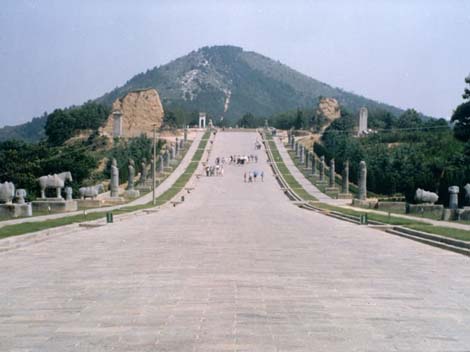
A Sweet Art:Sugar Painting
In and around China’s southwestern Sichuan Province, it is usual to ...
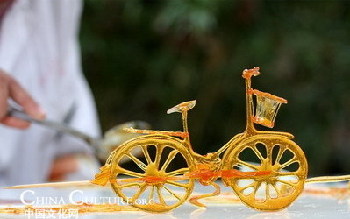
Chinese Treasure Displayed at Sha...
There are four treasures of the Chu Minority Culture displayed at th...
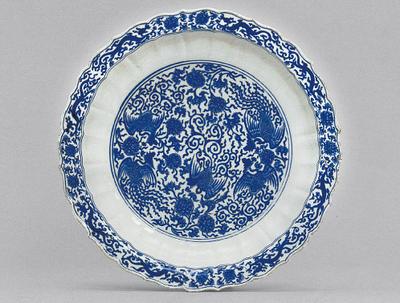
Custom
 more
moreWeb Dictionary
Martial Arts
12 Excellent Kung Fu Movies in 2010 You Shouldn'...
Martial Arts film can be artful and stunningly beautiful, and they...
Shaolin Monks Perform Martial Art in Moscow
A monk from China's Shaolin Temple performs Shaolin mar...
Chinese Kungfu Films Ready for the New Year seas...
The two Chinese blockbusters Let the Bullets Fly and If You Are th...





 print
print  email
email  Favorite
Favorite  Transtlate
Transtlate 